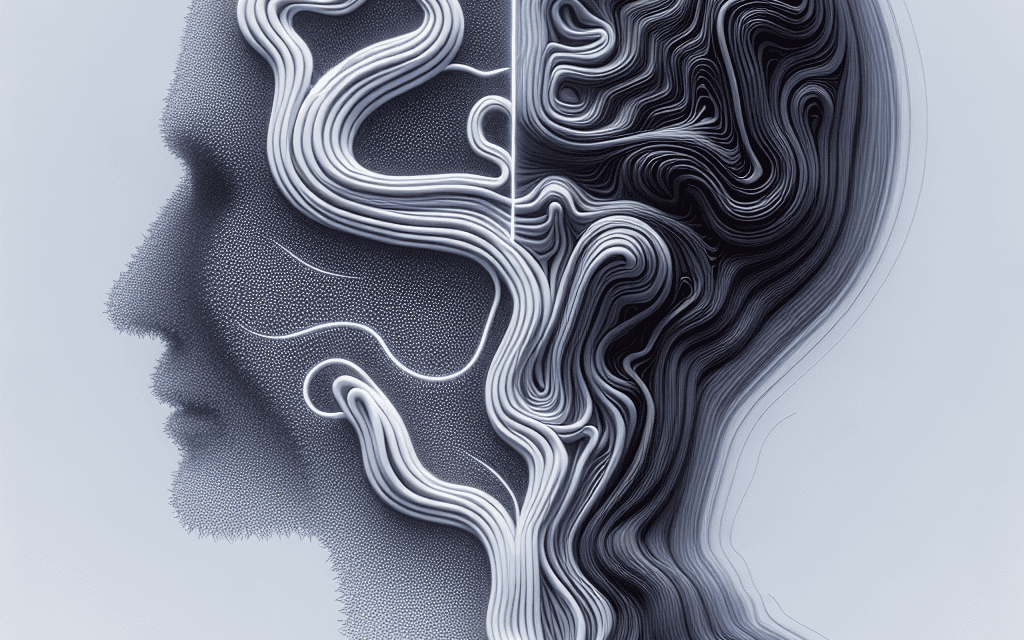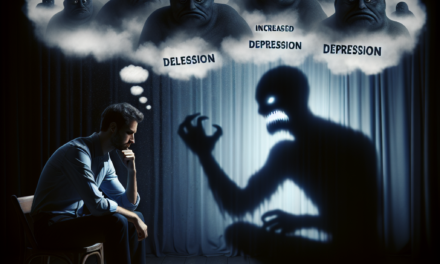The Impact of Anxiety and Depression on Our Movement Patterns
Anxiety and depression are two of the most prevalent mental health disorders affecting millions of people worldwide. While the emotional and psychological effects of these conditions are well-documented, their impact on physical movement patterns is often overlooked. This article delves into the intricate relationship between mental health and movement, exploring how anxiety and depression can alter our physical behaviors, posture, and overall mobility. We will examine five key subtopics: the physiological effects of anxiety and depression, changes in posture and body language, the role of movement in mental health, the impact on physical activity levels, and therapeutic approaches to improve movement patterns.
The Physiological Effects of Anxiety and Depression
Anxiety and depression are not just emotional states; they also manifest physically in various ways. Understanding the physiological effects of these mental health conditions is crucial for recognizing how they influence movement patterns.
When a person experiences anxiety, the body enters a state of heightened arousal, often referred to as the “fight or flight” response. This response triggers the release of stress hormones such as cortisol and adrenaline, which prepare the body to react to perceived threats. While this response can be beneficial in short bursts, chronic anxiety leads to prolonged physiological changes that can affect movement.
- Muscle Tension: Chronic anxiety often results in increased muscle tension, particularly in the neck, shoulders, and back. This tension can lead to discomfort and pain, which may alter a person’s movement patterns. For instance, someone with anxiety may adopt a more rigid posture, limiting their range of motion.
- Coordination and Balance: Anxiety can impair coordination and balance due to heightened sensitivity to external stimuli. Individuals may become overly cautious, leading to hesitancy in their movements. This can result in a lack of fluidity in motion, making everyday activities more challenging.
- Fatigue: Depression often leads to fatigue and low energy levels, which can significantly impact movement. Individuals may find it difficult to engage in physical activities, leading to a sedentary lifestyle that further exacerbates their mental health issues.
- Breathing Patterns: Anxiety can alter breathing patterns, leading to shallow or rapid breathing. This can affect oxygen delivery to the muscles, resulting in decreased physical performance and increased feelings of fatigue.
- Heart Rate Variability: Both anxiety and depression can lead to changes in heart rate variability, which is a measure of the autonomic nervous system’s regulation of the heart. Reduced variability is associated with poor physical health and can affect overall movement efficiency.
Research has shown that individuals with anxiety disorders often exhibit altered movement patterns, such as increased startle responses and avoidance behaviors. For example, a study published in the journal “Psychological Science” found that individuals with social anxiety disorder displayed more rigid and less fluid movements compared to those without the disorder. This rigidity can be a direct result of the body’s response to anxiety, leading to a cycle of avoidance and further anxiety about movement.
Changes in Posture and Body Language
Posture and body language are critical components of non-verbal communication and can be significantly affected by anxiety and depression. These changes can influence how individuals perceive themselves and how they are perceived by others.
Individuals suffering from anxiety often exhibit closed body language, such as crossed arms or hunched shoulders. This posture can be a subconscious attempt to protect oneself from perceived threats. Research indicates that such postures can reinforce feelings of anxiety, creating a feedback loop that perpetuates the condition. For instance, a study published in the journal “Health Psychology” found that adopting a more open posture can lead to increased feelings of confidence and reduced anxiety levels.
- Slumped Posture: Depression is frequently associated with slumped or drooped posture. This can be attributed to low energy levels and a lack of motivation. Individuals may find it challenging to maintain an upright position, leading to further feelings of sadness and hopelessness.
- Facial Expressions: Changes in facial expressions are also common in individuals with anxiety and depression. A lack of eye contact, frowning, or a downturned mouth can signal distress and contribute to social withdrawal.
- Movement Speed: Anxiety can lead to rapid, jerky movements as individuals may feel the need to escape from perceived threats. Conversely, depression can result in slower, more deliberate movements, reflecting the individual’s low energy levels.
- Gestures: Individuals with anxiety may exhibit fidgeting behaviors, such as tapping fingers or shifting in their seats. These gestures can be a manifestation of nervous energy and can further distract from effective communication.
- Impact on Social Interactions: Changes in posture and body language can significantly affect social interactions. Individuals with anxiety may avoid eye contact or appear withdrawn, which can lead to misunderstandings and social isolation.
Understanding these changes in posture and body language is essential for developing effective interventions. For example, cognitive-behavioral therapy (CBT) often incorporates techniques to help individuals become more aware of their body language and posture, encouraging them to adopt more open and confident stances.
The Role of Movement in Mental Health
Movement plays a crucial role in mental health, serving as both a symptom and a potential treatment for anxiety and depression. Engaging in physical activity can have profound effects on mood and overall well-being.
Research has consistently shown that regular physical activity can reduce symptoms of anxiety and depression. Exercise releases endorphins, which are natural mood lifters. Additionally, physical activity can help regulate sleep patterns, improve self-esteem, and provide a sense of accomplishment. A meta-analysis published in the journal “JAMA Psychiatry” found that individuals who engaged in regular physical activity had a significantly lower risk of developing depression compared to those who were sedentary.
- Types of Movement: Different types of movement can have varying effects on mental health. Aerobic exercises, such as running or cycling, are particularly effective at reducing symptoms of anxiety and depression. Strength training has also been shown to improve mood and self-esteem.
- Mind-Body Practices: Practices such as yoga and tai chi combine physical movement with mindfulness, offering additional benefits for mental health. These practices can help individuals develop greater body awareness and reduce stress levels.
- Social Interaction: Group activities, such as team sports or fitness classes, can provide social support and reduce feelings of isolation. Social interaction is a key factor in improving mental health outcomes.
- Barriers to Movement: Despite the benefits of movement, individuals with anxiety and depression may face barriers to engaging in physical activity. These barriers can include low energy levels, lack of motivation, and feelings of self-doubt.
- Creating a Routine: Establishing a regular movement routine can be beneficial for individuals struggling with mental health issues. Setting achievable goals and gradually increasing activity levels can help build confidence and improve overall well-being.
Incorporating movement into daily life can be a powerful tool for managing anxiety and depression. For example, a study published in the journal “Psychosomatic Medicine” found that individuals who engaged in regular physical activity reported lower levels of anxiety and depression over time. This highlights the importance of promoting movement as a key component of mental health treatment.
The Impact on Physical Activity Levels
Anxiety and depression can significantly impact an individual’s physical activity levels, often leading to a cycle of inactivity that exacerbates mental health issues. Understanding this relationship is crucial for developing effective interventions.
Individuals with anxiety may avoid physical activities due to fear of judgment or negative evaluation. This avoidance can lead to a sedentary lifestyle, which is associated with a range of negative health outcomes, including obesity, cardiovascular disease, and further deterioration of mental health. A study published in the journal “Preventive Medicine” found that individuals with anxiety disorders were less likely to engage in regular physical activity compared to those without anxiety.
- Depression and Inactivity: Depression often leads to a lack of motivation and energy, making it difficult for individuals to engage in physical activities. This inactivity can create a vicious cycle, as reduced physical activity can further contribute to feelings of sadness and hopelessness.
- Social Withdrawal: Both anxiety and depression can lead to social withdrawal, reducing opportunities for physical activity. Individuals may avoid social situations that involve movement, such as group sports or exercise classes.
- Perceived Barriers: Individuals with anxiety and depression may perceive barriers to physical activity, such as lack of time, resources, or support. Addressing these barriers is essential for promoting engagement in physical activities.
- Long-Term Consequences: The long-term consequences of reduced physical activity can be severe. Chronic inactivity is associated with increased risk of developing chronic diseases, which can further impact mental health.
- Interventions to Promote Activity: Interventions aimed at increasing physical activity levels among individuals with anxiety and depression can be effective. These may include structured exercise programs, community support groups, and education on the benefits of movement.
Understanding the impact of anxiety and depression on physical activity levels is essential for developing effective treatment plans. For example, a study published in the journal “BMC Psychiatry” found that individuals who participated in structured exercise programs reported significant improvements in both physical activity levels and mental health outcomes.
Therapeutic Approaches to Improve Movement Patterns
Addressing the impact of anxiety and depression on movement patterns requires a multifaceted approach that includes therapeutic interventions. Various therapeutic modalities can help individuals regain control over their movement and improve their overall mental health.
Cognitive-behavioral therapy (CBT) is one of the most widely used therapeutic approaches for treating anxiety and depression. CBT focuses on identifying and changing negative thought patterns that contribute to emotional distress. By addressing these thought patterns, individuals can develop healthier coping strategies and improve their movement patterns.
- Physical Therapy: Physical therapy can be beneficial for individuals experiencing movement difficulties due to anxiety and depression. Therapists can work with individuals to develop personalized exercise programs that address their specific needs and limitations.
- Mindfulness-Based Interventions: Mindfulness practices, such as meditation and yoga, can help individuals develop greater awareness of their bodies and movement patterns. These practices can reduce anxiety and improve overall well-being.
- Group Therapy: Group therapy can provide social support and encouragement for individuals struggling with anxiety and depression. Engaging in movement-based group activities can foster a sense of community and reduce feelings of isolation.
- Behavioral Activation: Behavioral activation is a therapeutic approach that encourages individuals to engage in activities that bring them joy and fulfillment. This can help combat the inertia often associated with depression and promote physical activity.
- Integrative Approaches: Integrative approaches that combine physical activity with traditional therapeutic modalities can be particularly effective. For example, programs that incorporate exercise, mindfulness, and cognitive-behavioral techniques have shown promise in improving mental health outcomes.
Research supports the effectiveness of these therapeutic approaches. A study published in the journal “Clinical Psychology Review” found that exercise interventions significantly reduced symptoms of anxiety and depression, highlighting the importance of incorporating movement into treatment plans.
Conclusion
The impact of anxiety and depression on movement patterns is profound and multifaceted. From physiological changes to alterations in posture and body language, these mental health conditions can significantly affect how we move and interact with the world around us. Understanding this relationship is crucial for developing effective interventions that promote both mental and physical well-being.
By recognizing the role of movement in mental health, we can encourage individuals to engage in physical activities that enhance their mood and overall quality of life. Therapeutic approaches that address both mental health and movement patterns can provide individuals with the tools they need to regain control over their bodies and improve their mental health outcomes.
Ultimately, fostering a greater understanding of the connection between anxiety, depression, and movement patterns can lead to more effective treatment strategies and improved quality of life for those affected by these conditions. As we continue to explore this relationship, it is essential to prioritize movement as a vital component of mental health care.





